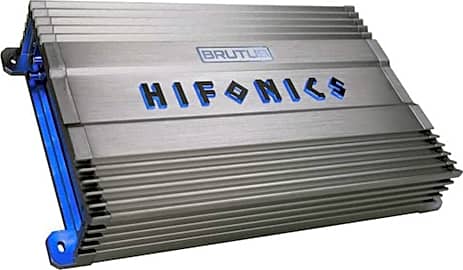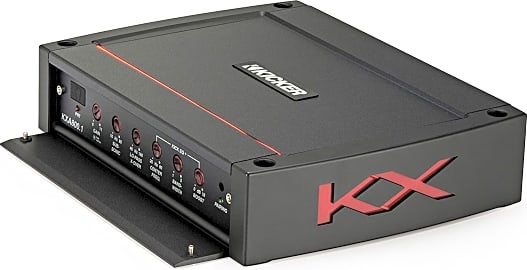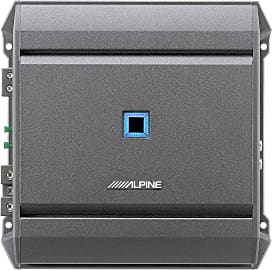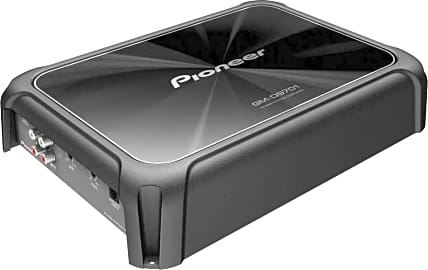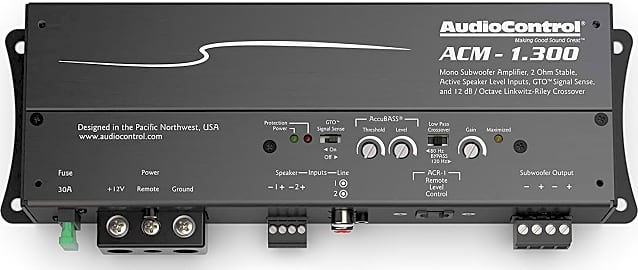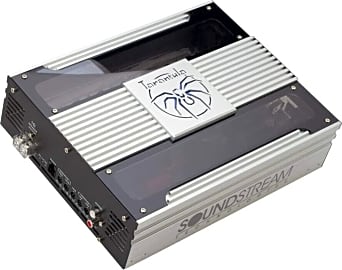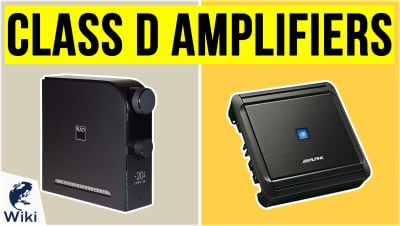The 10 Best Mono Amplifiers

This wiki has been updated 46 times since it was first published in April of 2015. Unlike the left and right speakers, subwoofers need a mono signal, and that's often achieved using a dedicated monoblock amplifier. These high-powered units generally use efficient class-D technology to avoid overheating and straining a vehicle's electrical system, and they're usually designed for use in a range of 1 to 4 ohms. Here are some of the most reliable and powerful options around. When users buy our independently chosen editorial recommendations, we may earn commissions to help fund the Wiki.
Editor's Notes
November 23, 2020:
This time around we've completely overhauled our list, replacing all of our previous entries with more recently released models. While it's true that many of those aforementioned entries are still viable, most of them have been either discontinued, dethroned by an upgraded version, or were simply getting up in years. Many of our newly-selected amps have similar features given that they are all class-D monoblocks, but picking the best one for your needs is going to depend on the price point you're comfortable with and whether or not there are any specific features you need. Don't worry too much if you find a model on our list that seems great but doesn't have the right wattage for your setup, as pretty much all of them have alternative versions available that are identical except for their power-level.
If cost is no issue and you simply want the highest-quality device you can get, you'll want to take a look at models like the Sundown Audio SAE-3000D and the Rockford Fosgate R2-500X1. These choices both have a relatively high per-watt price, but this is no surprise considering that they are beautifully constructed inside and out. Both feature durable enclosures and reliable electronics that are less sensitive to things like heat or excess wattage, which is important for something you plan on driving to its maximum potential on a daily basis. They've got a wide variety of signal controls, passthrough ports for integration with other amps, and the Sundown Audio SAE-3000D even comes with a dedicated bridging mode. Whereas monoblocks generally can't be bridged, since they only produce a single channel, this feature allows you to hook up two identical Sundown Audio SAE-3000D models in order to drive separate subwoofers with the full power of each amp.
The two Kicker-brand entries on our list, namely the Kicker KEY500.1 and the Kicker KXA800.1, are also quite expensive, however in their case it has more to do with cutting edge features than a super high-quality construction. The value of the Kicker KXA800.1 actually comes from its remote, which differs drastically from the wired gain knob that comes with most other selections. The controller that comes with the Kicker KXA800.1 is not only wireless, but can perform four distinct functions. It can adjust gain and phase settings, set the intensity of the amp's bass-restoration software, and can even be used to monitor output clipping. In addition, a single remote can be used to control multiple amps from this series if so desired. The defining feature of the Kicker KEY500.1 on the other hand is its built-in microphone. This allows the internal DSP to automatically adjust to your cars acoustic environment after listening to a series of test tones through your car's existing speakers.
Of course, not everyone needs or even wants a top-end amp with obscure features. If you just want something that works you might be more interested in midrange choices like the Alpine S-A60M and the Pioneer GM-D9701. These devices generally feature only the essentials, such as gain adjustment, a low-pass filter, and in the Alpine's case, a variable bass boost. However, this is made up for by their build quality, both in terms of their enclosures and their internal circuitry. If longevity and reliability are more important to you than onboard signal controls, and you're looking to save some money, these are probably your best bet.
Those who are primarily concerned with affordability may want a basic option such as the Rockville dB11. Choices in this range usually sacrifice a bit of build quality in order to save costs. For instance, while many high-end amps are known for handling wattages way above their rating with ease, models in this range are often quite sensitive and may just barely hit their rated wattages in the first place. The good news is that this is generally not a problem for casual listeners, and even these amps will far exceed the quality of your factory system in all likelihood. If you specifically want something with a low per-watt price because you desire extreme volumes, you may be even better suited by the Soundstream TXP1.18000D, a device that's explicitly intended to provide booming bass at a very low cost.
Before selecting any mono amp make sure that your subwoofer is compatible, and if you haven't already chosen an amp for the rest of your speakers check out our articles on multichannel amplifiers and car amplifiers with Bluetooth.
July 09, 2019:
Every bit as important as the subwoofer you choose for your car is the amplifier behind it. Class D amplifiers are traditionally used to power 12- and 15-inch cones because they're significantly more energy-efficient than class AB technology, and it takes a lot more power to drive a subwoofer than it does a standard speaker. Using a class D monoblock ensures you won't generate too much heat or overly tax your vehicle's electrical system.
With that said, two of the best choices on the market, made by Precision Power, feature dual high- and low-power inputs and can actually function as a three-way stereo and bridged mono amp using what's called tri-mode. Not coincidentally, these top-of-the-line devices have an especially high power rating that makes them safe to run that way. You don't have to set up tri-mode, however, and they do an incredible job using standard mono output, especially in light of their very reasonable prices. Audiopipe is a similarly high-quality brand, offering plenty of bang for the buck, plus they're constructed a little smaller than much of the competition so they're easier to fit into cramped cabs and trunks.
If you're willing to spend a little more, Sundown and SoundQubed are commonly lauded by dedicated enthusiasts as some of the clearest and most capable. They come with very large capacities and can push just about any pair of 15-inch subs on the market, but you should double-check that your electrical system can handle them. Finally, Kicker and Rockford Fosgate are two very well-known manufacturers whose monoblocks definitely uphold their good reputation. If you're looking for anything with an output of over 2,000 watts, we have an excellent rundown of some powerful competition amps in addition to the ones listed under the Special Honors section.
No matter what size amp you end up with, make absolutely certain to use care when installing it. One wrong connection or just a little bit of poor technique can destroy one of these or the speaker it's connected to, thanks to the high level of power moving through the circuitry. Make sure to do thorough research to match all your devices properly, and if you're ever unsure, don't be afraid to seek help from a professional.
Special Honors
Crescendo Audio Symphony S1 Plus The Crescendo Audio Symphony S1 Plus is the latest iteration of an amp that's extremely popular among fans of high-fidelity sound. It's at least as powerful as its spec sheet claims, and should satisfy all but the most demanding users. It's not incredibly expensive, but it is a little harder to find than most other options. crescendoaudio.com
Incriminator IA80 As the company's name implies, this 9600-watt beast can easily get loud enough to wake the neighbors and get the cops called. It's part of a class known as competition amps, and as long as you have the high-level power system to drive it, it's one of the loudest and most capable on the market. Of course, it costs a few thousand dollars, but if your reputation as the loudest on the block is at stake, it may be worth the high price. incriminatoraudio.com
DC Audio 10.0K DC Audio is well-known by the people who gather in huge parking lots and compete for the title of most ear-splitting bass levels. Their high-level amps are incredibly expensive and you might have to track down a local dealer to make certain of the exact model you want, but if you're crafting a high-end competition rig, they're awfully hard to beat. dcsoundlab.com
History Of The Audio Amplifier
Eventually all of these partial-vacuum amplifiers were replaced by fully-vacuumed tube amplifiers.
In 1906 the first electronic device capable of amplifying sound was created and it was called the Audion and was invented by Lee De Forest, who was an electrical engineer. The Audion was a triode, meaning it consisted of three electrodes that were placed inside of a partially evacuated glass envelope or tube. The invention of the Audion hailed the beginning of the electronics age and made possible things such as amplified radio and long-distance telephone calls.
The Audion tube contained a small amount of gas because De Forest believed it was necessary for the amplification properties. As it turned out, not only was the gas not necessary, it actually hampered the device's ability by limiting the dynamic range and giving the sound nonlinear characteristics, making the amplification erratic. Despite its shortcomings, the Audion was used to build the first successful electronic oscillators and amplifying radio receivers. Triode-based continuous wave radios also allowed amplitude modulation sound transmission, commonly known as AM radio.
By 1913, another inventor named Harold Arnold, who had purchased the rights to De Forest's Audio, was working on developing triode amplifiers with a higher vacuum. This device was known as the Pliotron. Eventually all of these partial-vacuum amplifiers were replaced by fully-vacuumed tube amplifiers. Without the invention of the Audion and the triode, most mass communication devices such as TV, radio, and the public address system would never have been possible.
As transistor technology become less expensive and more practical in the 1970s, transistor-based amplifiers began to replace the older vacuum tube models, but for many years after their introduction, they could not match the former's sound quality. This led audiophiles to believe that tube-based amplifiers were inherently superior. Over time, electrical engineers learned to better understand the causes for the distortion process within transistor amplifiers and eventually correct it. Currently they are far superior to the vacuum tube amplifiers.
Mono Vs. Stereo: What's The Difference?
Mono and stereo is a source of much confusion for the average consumer. Some people seem to think mono sounds better, while others feel that stereo does. Many receivers and head units these days can electronically switch between stereo and mono, but not so with amplifiers. If you have ever been listening to music in your home or car and switched from stereo to mono, you may not have heard any difference. This is because the difference is only noticeable when the music or recording has been produced in one channel, or has been recorded at a louder setting in one channel than the other.
Consider surround sound when watching a movie. Those times when you are watching a movie with surround sound and it sounds as if a noise has moved from one side of the room to another, that is making use of stereo sound recording and playback. If you were listening to that on a mono system, it would not have created that effect of movement. The rest of the time when watching a movie, it would have made no difference whether you were listening to a mono system or a stereo system as the sound was recorded and intended to be played back on both sides at the same level.
A stereo amplifier has two independent channels, the left side and the right side. These two signals are similar, but not the same. Sound or voice can be produced on just one channel, which can be used to give music and sound effects a sense of depth. They can also be produced slightly higher on one channel than the other to make a sound that seems to have originated off center. If the sound on the left channel is produced slightly higher than sound on the right channel, it will sound as if it is coming from slightly off to the left.
In a mono system, all of the audio signals get mixed together and then routed through a single audio channel. This means that even if a mono system makes use of multiple speakers, there will be no sound difference between them as the signal coming out of every one will be exactly the same.
Understanding Amplifier Specifications
There are a few important terms one must understand when considering which amplifier to purchase. Power output, which will be rated in watts, translates to how loud the amplifier is capable of getting. The larger the speakers, the more watts your amplifier will need.
Ideally one should look for an amplifier that has a low THD rating.
Total harmonic distortion is often ignored by consumers, but actually makes a big difference in sound quality. It tells you how much effect the amplifier will have on the sound output. The higher the total harmonic distortion or THD, the more distorted the sound will be from the original recording. Ideally one should look for an amplifier that has a low THD rating.
Many amps also site the signal-to-noise ratio or SNR. This tells you how much background noise the amplifier will make. If the volume is set very loud, one may not notice the background noise of the amplifier, but at lower volumes, the electronic hum can be quite noticeable. It is best to find an amplifier with a higher signal to noise ratio. The higher the signal to noise, the less noticeable the electronic noise will be.



